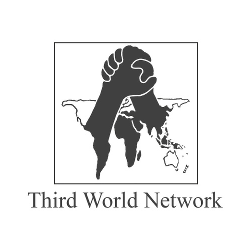By Harris Gleckman, Associate, Transnational Institute[1]
COVAX is the leading organization outside of Big Pharma distributing COVID-19 vaccines in the global South. With the support of the major Northern governments, COVAX has displaced the WHO and the UN humanitarian funds from this crucial global role. COVAX has set for itself an initial goal of providing vaccines to 20 percent of the people in the poorest 92 countries of the world. Because of this role, and the power it reflects, COVAX, a global multi-stakeholder group, poses political and health risks to developing countries and to multilateralism.
COVAX is unusual as a multi-stakeholder group in that it was set up – and is run – by two other multi-stakeholder groups, Gavi, the Vaccine Alliance, and the Coalition for Epidemic Preparedness Innovations (CEPI), both of which have strong relationships with the World Economic Forum, the Bill and Melinda Gates Foundation and Big Pharma. WHO, the only public body involved in the creation of COVAX, is but a junior partner.
The dominance of the two multi-stakeholder groups and Big Pharma is clear in the very structure of COVAX.[2] The COVAX Coordinating Meeting (CCM), the highest level body in COVAX, meets fortnightly to ensure alignment between the sponsors and its workstreams and taskforces. The CCM is co-chaired by the Board Chairs of CEPI and of Gavi. The Director General of the WHO is simply a member of the CCM along with two other senior Gavi staff, two other senior CEPI staff; a senior staff member from UNICEF, ‘industry partner representatives’ from the International Federation of Pharmaceutical Manufacturers & Associations and the Developing Countries Vaccine Manufacturers Network; and a CSO representative from the International Rescue Committee.
As with other multi-stakeholder bodies, it is crucial to see what organizations are presented as ‘real stakeholders’ and which potential ‘stakeholders’ are ignored. Missing from this governance leadership structure are relevant government officials and representatives of indigenous peoples, patient organizations, healthcare advocates, medical scientists and social movements, particularly those for potential beneficiary countries.
Even the operational management of the COVAX Facility Office is located within Gavi. This Office oversees the core day-to-day linkage of the founding organizations with the advisory groups and nine workstreams. As the Gavi website notes, “The Board of Gavi, the Vaccine Alliance is responsible for overseeing the Facility and will have ultimate responsibility for the decisions and effective implementation of the COVAX Facility”. Two of these COVAX taskforces, that are charged with prioritizing country recipients, are led by the two founding multi-stakeholder groups.
The composition of the COVAX Coordinating Meeting and the internal working arrangements of COVAX effectively marginalize the WHO as the lead global health authority in this crucial area.
The UN system is in a bind. It is weakened by decades of underfunding, public attacks and political marginalization, particularly by major OECD countries, their media and leading policy institutions. UN Secretariats are also constrained by non-actions of their supervisory intergovernmental bodies. Unfortunately, then the choice the UN system appears to have made is to admit defeat and align itself with multi-stakeholderism.
For the people in the 92 COVAX countries, COVAX departs from traditional emergency intervention actions in a number of ways. In humanitarian crises, the international community provides resources to victims at no cost. COVAX is not following this practice. Rather it is selling the vaccine to the countries at a discount, contributing to a market-based approach to healthcare and the undermining of SDG 3 on health and well-being. In addition, COVAX, in line with Big Pharma’s new practice, is requiring that purchasing governments provide COVAX with a waiver of liabilities, a condition that is not required from major Northern governments. In pre-COVID times, international aid was directed at least in principle to all impacted by a crisis. COVAX’s founding goal is to provide COVID care to only 20 percent of the population, officially leaving the vast majority outside international support to protect themselves from COVID.
If COVAX does not overcome vaccine nationalism and the purchasing power of richer countries, it may well leave countries and people which turned to COVAX without adequate vaccines going into 2023 and 2024. With its public build-up of expectations, what will be the likely political consequences?
Governments of the 92 countries and donor governments are not likely to limit their complaints to the advisory COVAX government committee. They are far more likely to air their complaints in an open forum at the World Health Assembly or at the UN General Assembly. These international complaints may well be driven by governments responding to domestic opposition and anger that their citizens are not getting the ‘promised’ international vaccines in a timely manner. Here then is one of the unstated roles for the multilateral system and the decisions by its executive heads to participate in COVAX: to absorb public complaints. The UN system, badly bruised in other ways from the COVID pandemic, does not need additional negative publicity by protecting COVAX and its sponsors. And 100 percent of the people in the COVAX countries do not need to be used to further the commercialization of healthcare.
[1] This box is an updated extract of a paper published by Friends of the Earth International and the Transnational Institute in April 2021, see https://longreads.tni.org/covax
[2] All the organizational information is from https://www.gavi.org/sites/default/files/covid/covax/COVAX_the-Vaccines-Pillar-of-the-Access-to-COVID-19-Tools-ACT-Accelerator.pdf








